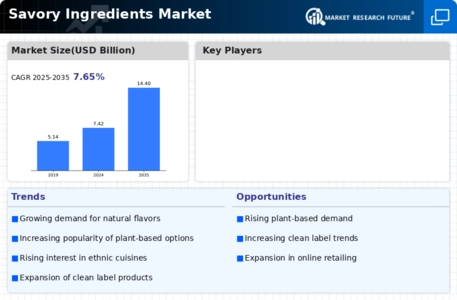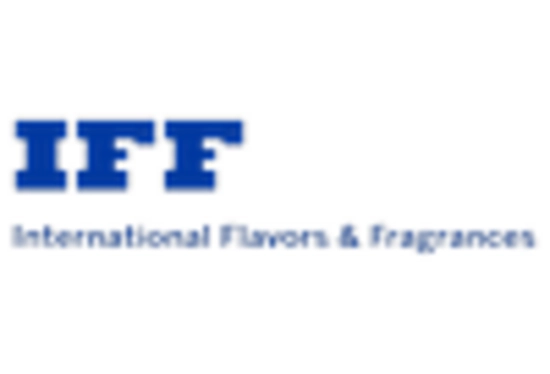Market Analysis
In-depth Analysis of Savory Ingredients Market Industry Landscape
The savory ingredients market is marked by dynamic changes influenced by a variety of factors that cater to evolving consumer tastes, culinary trends, and industry innovations. One of the key drivers of this market is the increasing demand for diverse and flavorful options in food products. Consumers are seeking savory ingredients that enhance the taste and overall sensory experience of their meals, leading to a growing market for spices, herbs, seasonings, and umami-rich components.
Changing consumer preferences and the global fusion of culinary traditions contribute significantly to the market dynamics of savory ingredients. As individuals explore a wide range of international cuisines, the demand for unique and authentic flavors has surged. This has led to an expansion of the savory ingredients market, with consumers seeking access to a variety of spices and seasonings to recreate diverse global dishes at home.
Economic factors, including income levels and consumer spending, play a role in shaping the market dynamics of savory ingredients. The affordability of these ingredients influences purchasing decisions, with consumers seeking cost-effective options that align with their culinary preferences. Additionally, economic conditions impact the food industry's use of savory ingredients in processed and packaged foods, with manufacturers balancing flavor enhancement and production costs.
Innovation in flavor development and processing techniques is a driving force behind the evolution of the savory ingredients market. Companies invest in research and development to create new and distinctive flavor profiles, meeting the demand for unique taste experiences. This innovation extends to clean label and natural savory ingredients, responding to consumer preferences for healthier and transparent food options.
Regulatory considerations, including food safety and labeling requirements, are crucial factors in the market dynamics of savory ingredients. Companies must adhere to regulations to ensure the safety and quality of their products. Clear and accurate labeling is essential for transparency and consumer trust, particularly as awareness of food allergens and dietary restrictions continues to rise.
Distribution channels significantly contribute to the market dynamics of savory ingredients. The availability of these ingredients in supermarkets, specialty stores, and online platforms ensures widespread accessibility for consumers. The strategic placement of savory ingredients in retail outlets, alongside fresh produce or pre-packaged meals, reflects efforts to integrate these products seamlessly into the broader food market.
Globalization has played a significant role in the savory ingredients market, with consumers seeking access to a diverse array of flavors from around the world. Companies operating in this market must consider international trade dynamics, cultural preferences, and regional culinary traditions to successfully cater to the global demand for savory ingredients. This includes adapting products to align with specific tastes and preferences in different regions.
Environmental considerations and sustainability have become important factors in the savory ingredients market. As consumers increasingly prioritize environmentally friendly and ethically sourced products, companies that adopt sustainable practices in ingredient sourcing and production contribute to environmental conservation. This commitment to sustainability not only appeals to conscientious consumers but also aligns with broader industry efforts to reduce environmental impact.









Leave a Comment